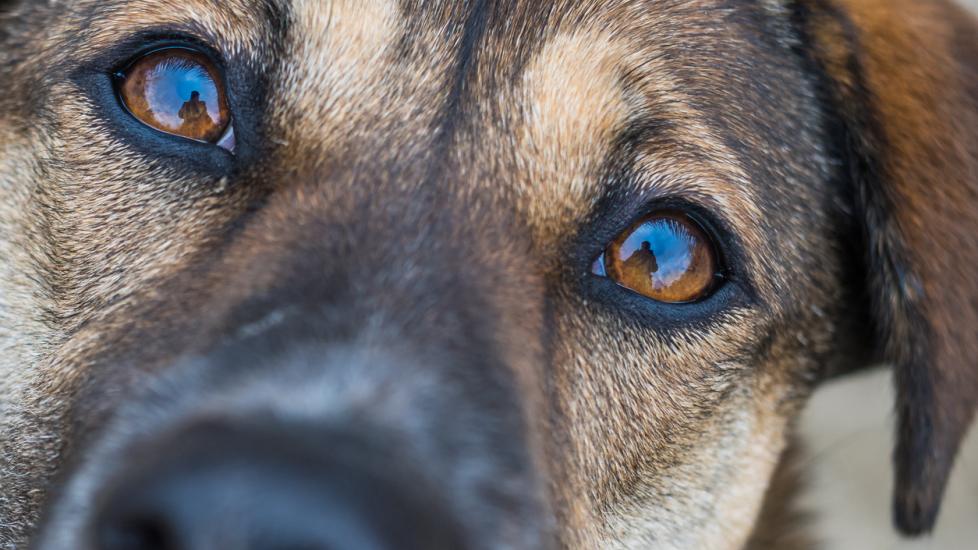Degeneration of the Iris in the Eye in Dogs / Iris Atrophy
What Is Iris Atrophy in Dogs?
The iris is a muscle in your dog’s eye that controls the size of the pupil. It’s helpful to think of the eye as a camera, and the pupil is the opening that changes to allow light in. When there is a lot of light, the iris will close the pupil to allow less in. When light is low, the iris will open the pupil to allow as much light in as possible. You can see the iris when you look at the dog's eye. The iris is the "colored' portion of the eye.
Iris atrophy is a condition that occurs when the muscle of the iris starts to thin. This usually occurs around the edge of the iris, causing a misshapen pupil. It can also occur within the iris itself, leading to a moth-eaten appearance of the colored portion of the eye.
Primary iris atrophy, the most common type of atrophy, tends to show up in older dogs. In secondary iris atrophy, the muscle thins due to pressure within the eye caused by inflammation.
Vet Recommended Health Support
Symptoms of Iris Atrophy in Dogs
Iris atrophy may have no few or even no symptoms. In some cases, dogs will become sensitive to light because the iris can no longer close the pupil in brighter conditions. In secondary iris atrophy, you might notice your dog squinting and winking more often.
Causes of Iris Atrophy in Dogs
There is no known cause for primary (or geriatric) iris atrophy. Like many changes that come with age, it can just happen naturally. Small, toy breed dogs can be more predisposed, but any dog can develop the condition.
In some cases, iris atrophy is caused by uveitis, or inflammation of a layer in the eye called the uvea. Uveitis has many causes, ranging from systemic disease to ocular trauma.
How Vets Diagnose Iris Atrophy in Dogs
Iris atrophy is commonly diagnosed during a routine ophthalmology exam. When a light is shined into the eye, vets look for holes in the iris or an abnormally shaped pupil. Your vet may also perfect a pupillary light reflex test. For this test, a bright light is shined in the eye, which should cause the pupil to contract. An abnormal or delayed response from the pupil may be a sign of iris thinning.
If any underlying condition is expected, your vet may perform tests to identify conditions including uveitis or glaucoma. X-rays may be performed on dogs who have experienced trauma that is possibly contributing to the iris atrophy.
Treatment for Iris Atrophy in Dogs
There is no treatment for primary iris atrophy in dogs. As a normal part of aging for some dogs, it can’t be reversed. The good news is that, for most dogs, iris atrophy won’t actually affect their vision, although they may become more sensitive to light.
Secondary iris atrophy is treated by addressing the underlying condition, usually uveitis, but it may also be caused by glaucoma.
Recovery and Management of Iris Atrophy in Dogs
Dogs with iris atrophy can lead normal lives. There is no way to halt progression of the condition and it rarely causes noticeable symptoms.
Iris Atrophy in Dogs FAQs
Is iris atrophy painful for dogs?
No, iris atrophy is not painful for dogs.
Can iris atrophy in dogs be fixed?
Iris atrophy in dogs is not treatable.
Will a dog go blind from iris atrophy?
Iris atrophy does not cause blindness. The dog's eye may have difficulty reacting to changes in light but this does not limit the ability of the dog to see.
Featured Image: iStock.com/Corey O'Hara
